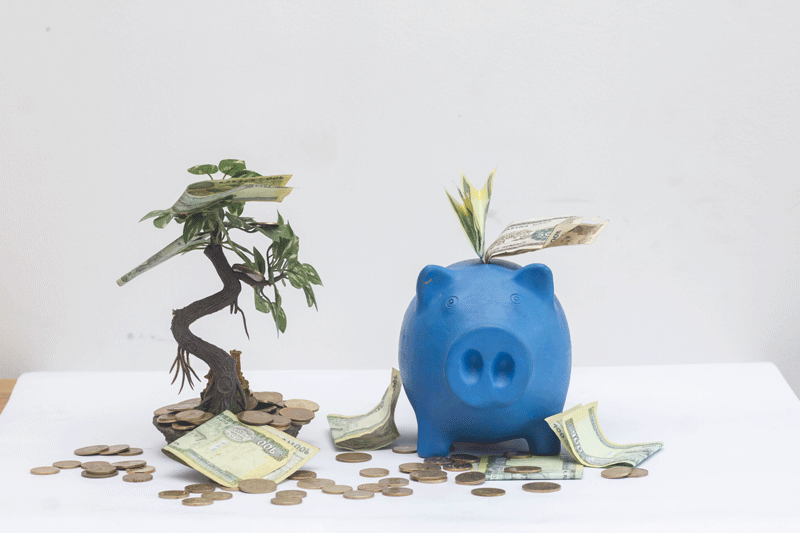Investing Intelligently
Investing your money properly will get you places instead of saving it in your pocket.
 With the inflation rate of 9.93% (as of 2016) if you save Rs. 70,000 to buy a product, the next year you will need approximately Rs. 77,000 to purchase the same. Therefore, just saving your money inside your pocket isn’t sufficient for you to fulfill your demands in the years to come. The best and proper way to increase the value of your money is to keep up with the country’s inflation rate is to invest it.
With the inflation rate of 9.93% (as of 2016) if you save Rs. 70,000 to buy a product, the next year you will need approximately Rs. 77,000 to purchase the same. Therefore, just saving your money inside your pocket isn’t sufficient for you to fulfill your demands in the years to come. The best and proper way to increase the value of your money is to keep up with the country’s inflation rate is to invest it.
Usually saving accounts grant you an interest income of just 4-5% whereas investing in stock can result in a cumulative growth of 16% in 10 years. Similarly, the monetary value of land inside the valley is believed to have appreciated by around 300% since 2003. Likewise, the value of gold is also known to have increased rapidly in the last 15 years.
So, instead of keeping your savings idle, it is advised to invest it. Yet, with investment comes the popular paradox, “higher the risk, higher the return.” The reality, however, is much more disappointing. One must choose wisely where to invest, and there are many factors which can affect that decision. One of which is the nature of your income and the time period in which you would expect your return.
If your income is stable and salary based, that is you receive a constant income regardless of your investment returns, you are at an advantage with your savings and you can invest in areas with higher risk and return. However, if your income is volatile and uncertain it is advisable to invest in liquid assets that can be converted to money immediately.
Nowadays, banks and other financial institutions provide you with the opportunity for fixed deposits with relatively higher interest rates so that saving is easier, safer and larger. Fixed deposits provide you a constant return at a higher value.
The next factor that affects the nature of your investment is the period of its return. For example, if you plan to retire at 60 you do not start investing at 50 or 55. You start planning ahead and start your invest gradually at 30 so that you an expect your yield at 60 to have worked its magic. If you are looking for something short-term, you need to invest in liquid assets, but for long-term, invest in land or other non-liquid assets.
Similarly, there are a few Citizen Investment Schemes such as Citizen Investment Trust and Retirement funds that accumulate your income and add certain percent to it so that you don’t retire empty-handed.
Life and health insurances are also a few other investment schemes that are highly popular in the western countries. They demand certain premium amount at regular intervals in exchange of their services as per the terms and conditions. They provide various monetary benefits later when you need it.
However, as the saying goes, “Do not put all of your eggs in the same basket.” What that means is that should the basket fall own, you will lose all your eggs. Hence, there must be multiple combinations of investment. Saving your money may not guarantee that you will not you to lose your money, but a wrong investment decision certainly can put you on the roads. Creation and management of portfolio, calculation of risk and return, higher net present value, and the purchasing capacity of the saved amount must be kept in mind while investing one’s savings. If money is invested wisely, instead of it being kept idly in pockets, it can result in economic growth of an individual, family, and the nation as a whole.


